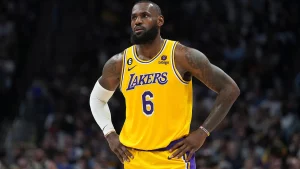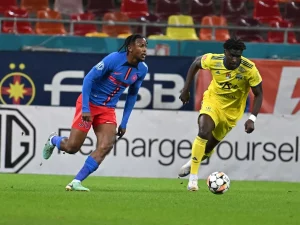BREAKING NEWS: Alex Orbison, son of legend Roy Orbison, has been verified…..

Interview: Alex Orbison on Roy Orbison’s MGM Years-part one
With today’s release of the Roy Orbison: The MGM Years 1965-1973 box set, SDE spoke to one of ‘Roy’s boys’, his son Alex Orbison, who spent three years overseeing its production. In the first part of an exclusive two-part feature, Alex talks about the personal and musical discoveries he made along the way – including a ‘lost album’ that is being released alongside the box set – and the long process of making a super deluxe edition…
Alex Orbison enjoyed a very close relationship with his father growing up. Both blue-eyed and far-sighted, they shared a love of making model planes and automobiles and could often be found together piecing together a new creation in Roy’s workshop. Then, of course, there was the music. By the age of three, Alex was strumming a violin – because his hands were too small for the guitar – and he discovered the drums aged eight. Roy let him try to play on his own for a week, before sitting down and teaching him technique (“I never saw him play drums apart from that time,” recalls Alex. “He had this innate sense of how things worked”). Alex and brothers Roy Jr. and Wesley also enjoyed going on the road with their father, watching from the side of the stage or from the mixing desk. On top of all that, Johnny Cash and June Carter lived next door and Bob Dylan would routinely pop round for jam sessions. Hardly surprising, then, that Alex Orbison ended up becoming a musician himself. Now running the Roy’s Boys organisation with his brothers to guard and nurture his father’s musical legacy, Alex has the opportunity to delve even more deeply into his musical heritage.
I catch up with Alex, via a Skype video call, at his office in Nashville, Tennessee. An instantly friendly sort of chap, he begins by giving me a panoramic view through the windows of the surrounding area, bemoaning the loss of much-loved local sandwich shop amid major construction work, but welcoming the forthcoming opening of a Virgin Hotel at the Music Row roundabout. Then we settle down to talk about his father’s fairly tumultuous years on the MGM label. Born in 1978 himself, Alex wasn’t alive then, but his detailed knowledge of that period borne from many hours of meticulous research is apparent in the course of a fascinating 75-minute conversation. I have come prepared with a couple of pages of questions, but I hardly needed to bother because he answers most of them before being asked. So here is Alex, in his own words, beginning with the story behind that ‘lost album’ which is being released for the first time alongside The MGM Years box set…
Tragedy and the ‘lost album’ by Alex Orbison
Roy had gotten divorced from Claudette, his first wife and Wesley’s mom, while he was touring Oh, Pretty Woman, which was a song written about her. Then he writes Ride Away [the opening song on Orbison’s first MGM album, There Is Only One Roy Orbison, 1965]… then Crawling Back and Breakin’ Up Is Breakin’ My Heart two albums later [The Orbison Way, 1966], songs about break-up. The paradox was by the time he was touring in 1966, Claudette had come back.
To start with at MGM, things were going as planned with the three records per year, but it was a high-pace release schedule alongside touring with no room for error. He would normally tour in the spring, record until halfway through of the end of June, and all of July and August he would be back on tour. He was recording an album of Don Gibson covers, so he had an album to release while he took time out to film The Fastest Guitar Alive movie, when, in June, Claudette was tragically killed in a motorcycle accident. MGM gave him some extra time on the condition he made up his quota of records by the end of the year [that is, June 1967, the end of the contracted year]. The release of the Don Gibson album got thrown off by a couple of months and things started to fracture. He had three Top 40 singles in Australia on the 1967 album Cry Softly Lonely One, but the long player was not released in Australia, only the States and the UK. The same with The Fastest Guitar Alive soundtrack.
In 1968, there was a focused effort to make a comeback of sorts. They spent time collecting the songs and recording for an album, Roy Orbison’s Many Moods, and that was supposed to come out. My dad met my mom in Leeds and the summer of ’68 seems like it was a great time, until, at the end of the summer, he heard that our family home burnt down in Hendersonville, Tennessee, killing my two eldest brothers [Roy Dewayne and Anthony]. My brother Wesley, my grandmother and grandfather survived. My dad was told it could have been worse, because there was an explosion.
So the Many Moods record got pushed back to 1969 and from outside appearances Roy disappeared off the map, especially in the States, until he appeared on the Johnny Cash Show towards the end of ’69.
What happened was that on 20 January 1969, he just went in the studio. He was very excited about being back with the guys, recording and he wrote a bunch of material for an album. Whereas the Many Moods album was mostly covers, for the new record he wrote eight or ten songs with Bill Dees and of those five made the record.
After Claudette passed away in 1966, MGM released Roy’s version of Too Soon to Know by Don Gibson, which includes the lyrics ‘It’s too soon to know if I can forget her’. People in the UK mistook that as being a song that he wrote and that he was trying to cash in on Claudette’s death. So after the fire happened, his management was very, very paranoid about having any releases that were too personal.
Instead, in summer, Roy went to the UK and recorded what was to be a live album, and MGM didn’t accept it because there was no provision in the contract. Since ’65, there had been four different presidents of MGM – they were calling it ‘The President of the Month Club’ – so the people that signed the deal with Roy had all gone, leaving lawyers to look into the contracts and saying, ‘No, we’re not doing this’.
My dad was really angry because the spirit of the MGM deal was supposed to be total creative freedom of what was recorded, where it was recorded, how it was recorded, how it was mastered and what was to be released.
First, they were not releasing in all territories, now they weren’t accepting this record, and then they quit paying him for some reason or another. The crossroads of all these things led to my dad filing legal suits with London, Decca and MGM, the live record only came out in the UK and the Many Moods album was not released in the United States. And an entire studio record was never released… until now.
So One Of The Lonely Ones is truly a studio album, not just a collection of unreleased material. When we went back to look at the logbooks, there were 17 or 18 songs recorded over the period between January and August 1969 to choose from; if it was a scrape-together record there would be material from ’66 to ’73 and outtakes from other records.
The standard MGM rule of thumb was that they would pick one song from the previous sessions, so I did that and that song was You’ll Never Walk Alone which was recorded in summer 1968 with the Many Moods record.
I ran into my dad’s old lawyer at the BMI Awards in Nashville recently. He came down to Hendersonville in the early Seventies to try to patch things up with MGM. When I told him about this unreleased record I had discovered from 1969, he had this look like I had mentioned a favourite dog of his or something from the past. He was, like, “Oh my god – I remember that record. It’s so weird that we [Roy and him] had talked about the record once and never talked about it again and it had totally slipped my mind.” It’s a little heartbreaking to read people’s comments that this is something that Universal just put together to try to make a quick buck because, frankly, I found the record. We did everything to put it together as a family and Universal are helping us with the important part of getting it to the people.
It’s funny because one of the comments was: “I saw this in the used bin the other day, so this must be a studio trick.” The name of the 1967 record Cry Softly Lonely One is very similar, so I have a sneaking suspicion they saw that in the used bin. We chose One Of The Lonely Ones as the name for the album, because it takes elements of other existing album names: There is Only One Roy Orbison and Cry Softly Lonely One. So I understand the confusion, but it totally fits since my dad wrote the title track about his experience of being so lonely after losing his family.
Even me, I’m a suspicious consumer. If I heard ‘unreleased studio record from 1969’, I’d think ‘What are we getting?’ Normally, people just change the titles of the songs, pull off the lead vocal to make it an instrumental, and you’re like, “This isn’t an unreleased track, I know this song.” But these are wonderful songs.
One of the tracks, Child Woman, Woman Child is the lost little sister to Oh, Pretty Woman. In 1969, it was a different world to 1964 and it’s like a next chapter, but it never saw the light of day at the time.
The last song on the album is called I Will Always. That was completely lost, missing in every record log. After it was recorded in 1969, it got buried into one of the other session tapes. The band put it together and played this song once, and they nailed it, and then they went on to the next one, so it didn’t get transferred and no one has heard this song since 1969.
I Will Always was directed at my mom, but she had never heard it. Listening to it, I got a glimpse of my parents’ young love.
They met when my dad looked over and said to the drummer, “Go get that girl – that’s going to be my wife.” My mom has said she always wanted the man to marry her to walk in the room and say, “This girl’s going to be my wife”’, so it was the same story from both sides. But my mom took one look at the drummer, over at my dad, rolled her eyes and said: “Who is Roy Orbison? If he likes me tell him to come over here, I’m not getting up.” Then my mom made fun of my dad’s jacket and the rest is history.
So I knew that story, but I didn’t know the career part of it, and getting to know that side of my dad through the recordings and his choice of songs has been an amazing process.
This album is the missing link in the story, personally and also when things really started to blow apart at MGM, and it’s very nice to have that in its place and see it all together.
I admit it’s a little confusing having a box set plus a separate unreleased record, but I don’t like people having to buy the box set if they just want to get the unreleased record. If you listen to it [One Of The Lonely Ones] and say, “I like this, I want more,” then great.
The making of a super deluxe edition by Alex Orbison
From conception to delivery, it’s taken three years to put together The MGM Years [13CD or 14 LP] box sets. I started listening to the unreleased material and out-takes in winter 2012. Everything is stored in alphabetical order, so there’s one for one year and one from the later year, and there were actually a couple lumped in from after the MGM record deal that really throws the sound out of whack. Listening in alphabetical order there’s no cohesiveness.
It was only when I put it together chronologically that the ’69 bunch of unreleased tracks popped out and I thought that perhaps this was an unreleased record. So I needed to search through the contracts and figure out what had happened there. We then had our first meetings with Universal, and after that it took almost 16 months to find all of the masters.
Going through all the MGM source tapes, I got to see all their production notes, listened to the genesis of how they stereo-panned , when they went to four-track and followed the evolution of technology through this crucial age.
Remastering was very important because the albums were mixed for the vinyl format so we lost a lot of the frequency from the moment the needle would touch the record. In 1965 and ’66, arguably, some of the speakers didn’t even have high-range tweeters, some of them were the older party box and you had one speaker to do it all. So there was a lot more high-end frequency and if you turned it up to modern digital levels you heard a bunch of stuff that you wouldn’t hear on the old vinyl. For instance, a lot of the strings, the tambourine… and man, they loved that tambourine – it is so loud!
It took eight months to make the finished 15 vinyl records [14 for The MGM Years 1965-73 box set plus the One Of The Lonely Ones LP].
For each record they send you one test pressing which is lacquered, heavy and harder than the rest of the records that they actually clamp and press – it’s kind of the mother of all pressings. Then for each record, they also send you three other [less heavy-duty] test pressings. One whole batch we received – over 50 records-worth – was wrong, so we had to start over.
With fifteen records, there were 30 sides that had to be tested. So I would go through, and say: ‘These sound correct level-wise, the volume in the high and low frequencies, everything, but there’s a loud pop at 1 minute 32 in song six, side one’.
It’s a ridiculously long process, because one defect, one pop, if there’s a bubble in the vinyl or in the master or anywhere, then you’ve got to put that vinyl disc over in the corner and start again. That’s why I have about 45 kilos of discarded 180-gram vinyl test pressings stacked up in my living room and another ten kilos in my office. When I went to clean up, I had to make separate piles because it was to the point where it was physically impossible to move!
That stack of vinyl sums up how intensive this project was and explains why the release was delayed – we were aiming for spring and ended up releasing in the holidays. We had the deal set up with Universal so we were able to invest our money in extra studio time and the remastering, and if something wasn’t right we could come back and make it right.
I’m really glad we spent the extra time and money. If you hear the velvety-ness of my dad’s voice on those records, it really is a quality that’s a little harder to get into a digital form just because of the naturalness of the vinyl.
Roy’s Boys is for all intents and purposes, an independent record label that has distribution through major record labels, in this case Universal. I can’t understate how important dealing with them is for the global execution of this, but on the front end, we compile all the stuff and then take it to them and say, ‘This is the way that it sounds and this is the way we want it to look’.
They don’t interfere in the music, because we assume the cost of that, and also the cost of advertising too. In one previous instance, we said to them, ‘We want to be very aggressive’ [on advertising], we overspent, and we ate the cost. That was our choice.
In this instance, our team spent countless hours just getting to the point where the music sounded right and the packaging looked right. This project involved over a thousand hours of just sitting in a chair listening to the source tapes, organising them, and in some cases, pulling up the original mixes to balance or going back and re-cueing and balancing.
Then spending hundreds more hours remastering – and we assumed the cost for that.
Everyone had the same goal: how do we make sure that Roy’s voice sounds as good as possible from front to back. Having two ‘Grammys’, Richard Dodd and Chuck Turner, in the studio to work with was a huge privilege for me, and they showed the reverence that they still have for my dad by spending hundreds of hours on their own just trying to unlock the puzzle, to get it to sound as good as possible.
We put it together, the way everything sounds and looks, and then Universal would give us choices: “Do you want to use the gold leaf on the record label or on the box? It’s going to cost this much more…” So we elected to spend more because it really is important for us as a family to have it look the best.
We also elected to spend extra money to have 60-page liner notes, with personal photos – of Roy, Roy Dewayne and Tony, Claudette, pictures of my dad’s wedding [to Barbara] with my grandparents there and Wesley aged three…
It’s not all about the money at the end of the day. As my mom Barbara Orbison would say, ‘When you’re running a brand you have to focus on every angle of it, because while people are going to have their favourite period of Roy Orbison or have an opinion on him one way or the other, we’re here to represent Roy. That’s important across the board.”
So it really was a labour of love. I’m confident that we will, quote/unquote, “make our money back”, but at the end of the day that’s not the most important thing. For us, it was to get it sounding and looking as good as possible. We feel we’ve achieved what we set out to do. This wasn’t some record company trying to cash in on someone who had passed away, this really was the family working together closely with a very excited record label.
I’ve played the this stuff here in my office for fans who know my dad’s work well, and first song, it’s like the talking stops and they just cry, because it sounds so much better than they’ve heard before. It’s an amazing thing that I get to serve as a son to a father, to do him that justice.
Ultimately, just to be able to have this stuff for people if they want to go get it, it’s such a service to my dad and to music in general. These days when people have qualms the direction that music’s going and the way some of the stuff sounds, here’s a ton of Roy Orbison music that is recorded from a classic period and it hasn’t really seen the light of day.






